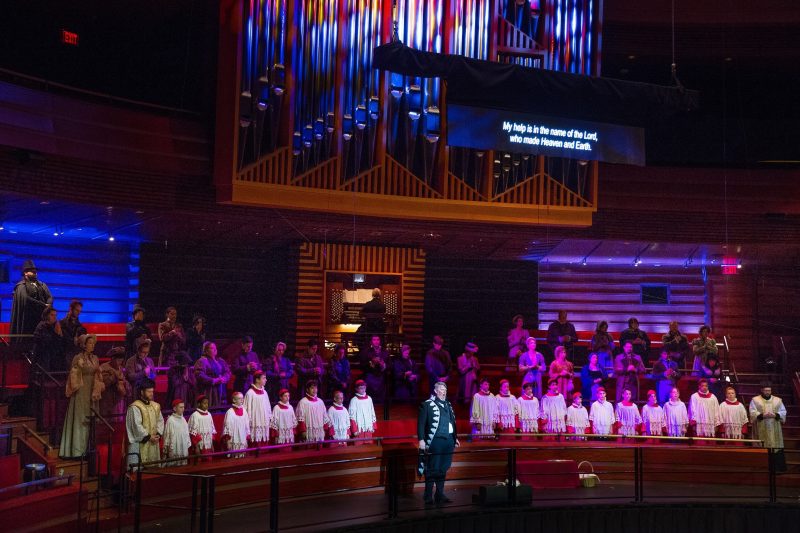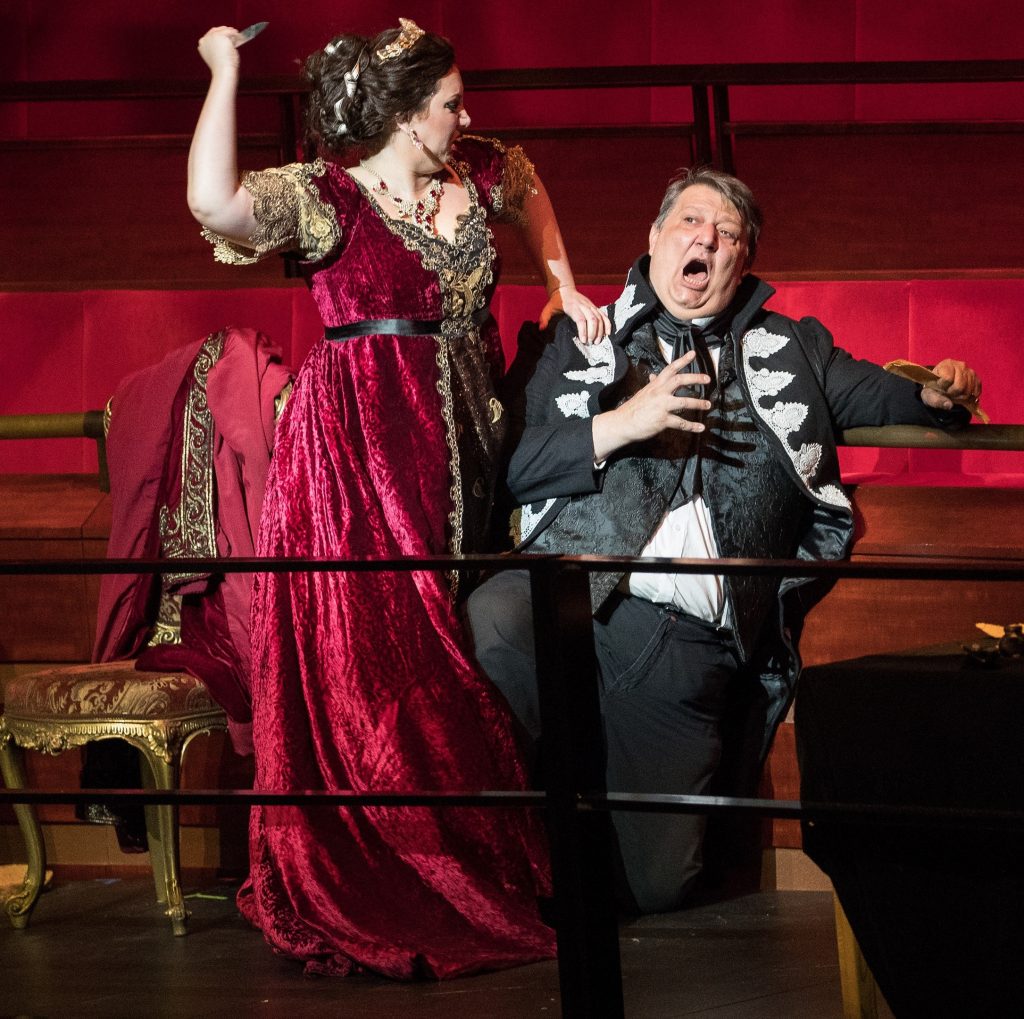
Puccini: Tosca. Yannick Nézet-Séguin conducting the Philadelphia Orchestra at the Kimmel Center, May 12-19, 2018.
Tosca, more than most operas, relies heavily on orchestra. Excepting Wagner and Strauss, no one surpassed Puccini in his operatic use of the orchestra. Much of Tosca’s music is instrumental. Often the orchestra plays extended melodies while the singers’ lines are half-spoken parlando. Therefore Tosca is a logical selection for a conductor of one of the world’s great symphony orchestras who wants to show off his band’s prowess.
Yannick Nézet-Séguin has not conducted Tosca previously, which gives this production additional interest. He assembled a cast of international regulars, making this a co-equal pairing of top level singing and playing. Every one performed at the top of their game — some of them exceeding expectations — turning this into one of the highlights of the year.
Nézet-Séguin magnifies the rich sounds of the Philadelphia Orchestra in the thundering chords of Scarpia’s entrance; and in the romantic melodies of Floria and Mario; and in the brassy accompaniment to Mario’s cry of “Vittoria”; and in the crescendo of children’s and adult choruses with organ and orchestra at the end of Act I. Best of all is the opening of Act III with Puccini’s landscape of Rome at dawn, including a shepherd’s song and the tolling of church bells, which the orchestra presents as a gorgeous tone poem.
He does not impose a conductor-centric view, driving the singers to catch up. Rather, Nézet-Séguin is solicitous of all the performers, encouraging them to breathe and add expression. Yannick’s orchestra supports them with lush, swooning accompaniment.
Jennifer Rowley was hired to fill in for the originally-scheduled Sonja Yoncheva, who made her Met debut in 2015 under Nézet-Séguin’s baton in Otello and who has sung Tosca at the Met and elsewhere. Yoncheva was diagnosed with an ear infection and confined in Europe, which put pressure on the lesser-known replacement. Yet Rowley is an ideal Tosca, with warm tones and strong projection. She adds a wide range of color as she expands many of her phrases.
I previously heard her as Leonora in Trovatore and I was unprepared for the dynamism of her chest voice when she faces Scarpia and says “Quanto?” and “E morto.” Her “Vissi d’arte” deservedly brought the house down. This powerful performance should raise her from the level of utility player (as sports fans would say) to major stardom.
Yusif Eyvazov is another principal who exceeds our hopes. While I heard him twice before, this performance showed greater power and intensity. He has the squillo, the intense ping that we hope to hear from the revolutionary activist and poet Cavaradossi. Eyvazov, a 40-year-old from Azerbaijan, is the husband of Anna Netrebko but stands on his own feet as a significant dramatic tenor. In his two arias he does not tear passion into shreds but, rather, sings with clean lines and sweetness of tone. (And does the same with “O dolci mani.”)
Ambrogio Maestri is a towering Scarpia, artistically as well as physically. He dominates with his height, his bulk, and his glowering voice. This is the most imposing Scarpia I’ve seen and heard since Leonard Warren. Others in between have been insinuating, or subtle, or slimy — but none as imposing and simply terrifying.
Richard Bernstein is a heroic Angelotti, Greg Fedderly a fierce Spoletta, Federico De Michelis a scary Sciarrone, while Kevin Burdette plays the sacristan for comic relief. Cameron Bowden was the excellent boy soprano at the performance I attended.
James Alexander staged the opera in the Conductor’s Circle, which is the balcony where choruses usually are seated, just above the orchestra’s platform (and where audience members sit at other concerts, with a good view of the conductor’s face.) All the singers are in period costumes, use props like a painter’s easel, and move dramatically across that balcony. It’s by far the most detailed dramatic staging of any Philadelphia Orchestra event so far.
Fine contributions come from the Philadelphia Symphonic Choir, playing soldiers, police, noblemen and townsfolk, and members of the Philadelphia Boys Choir, trained by Joe Miller.
The one reservation I have concerns Act I conversational scenes between Tosca and Cavaradossi, then between Tosca and Scarpia. Puccini wrote them with frequent stops and starts, with naturalistic pauses, and it would be nice to have a strong conductor like Nézet-Séguin impose a steady pulse of rhythmic regularity which would propel those conversations forward with more impetus than we heard this time.
This review originally appeared on the international website The Opera Critic.
Below, Rowley stabs Maestri, photo by Jessica Griffin:
